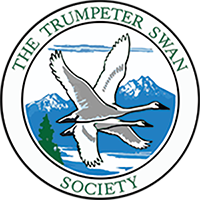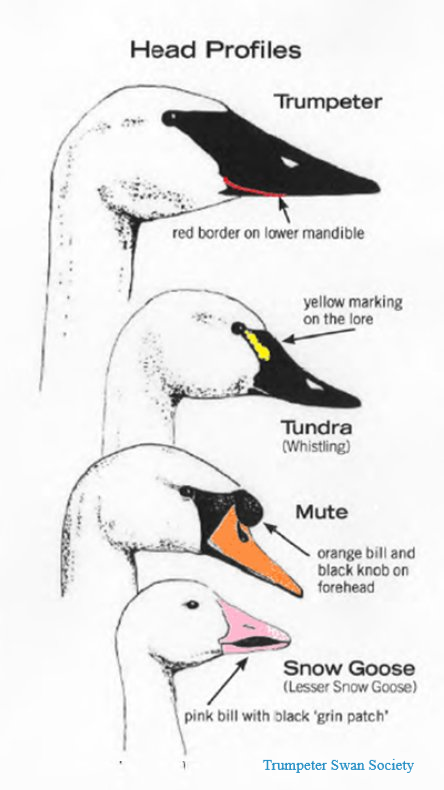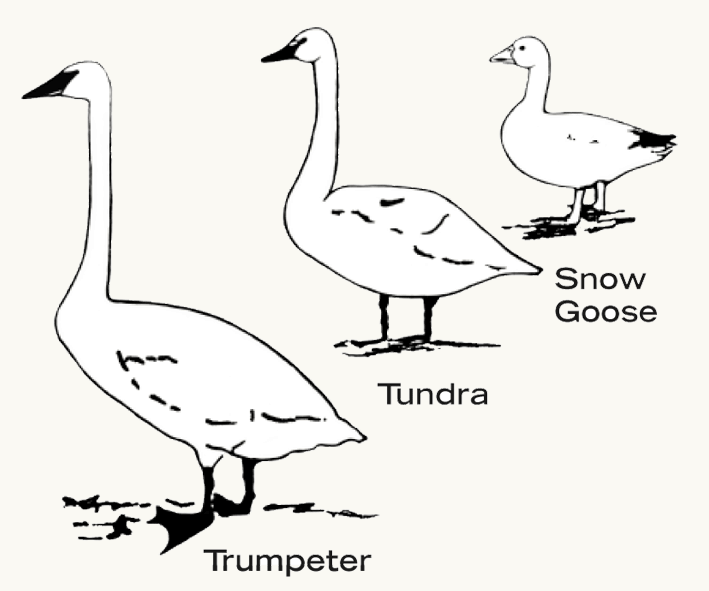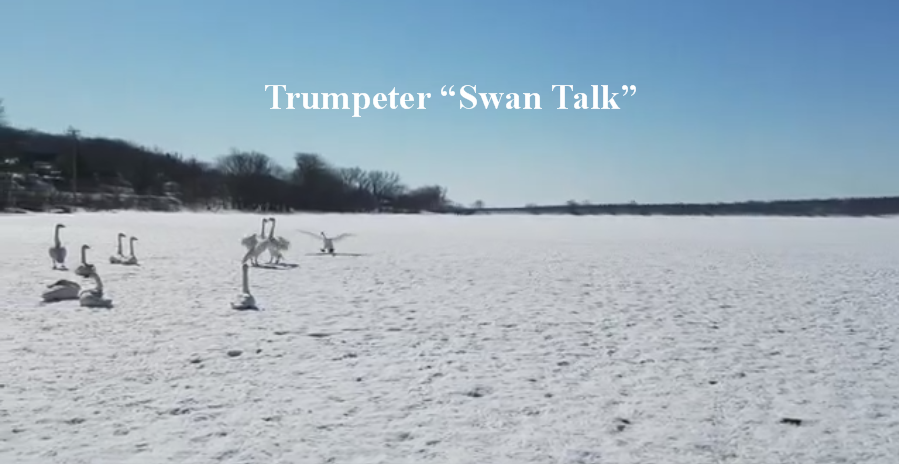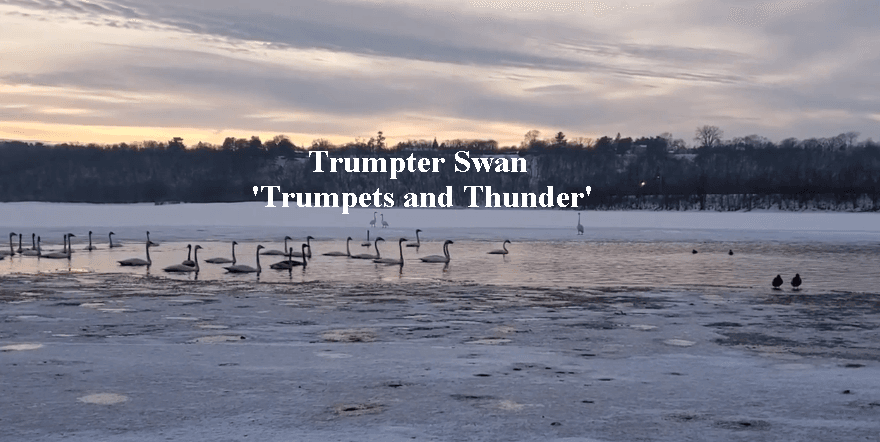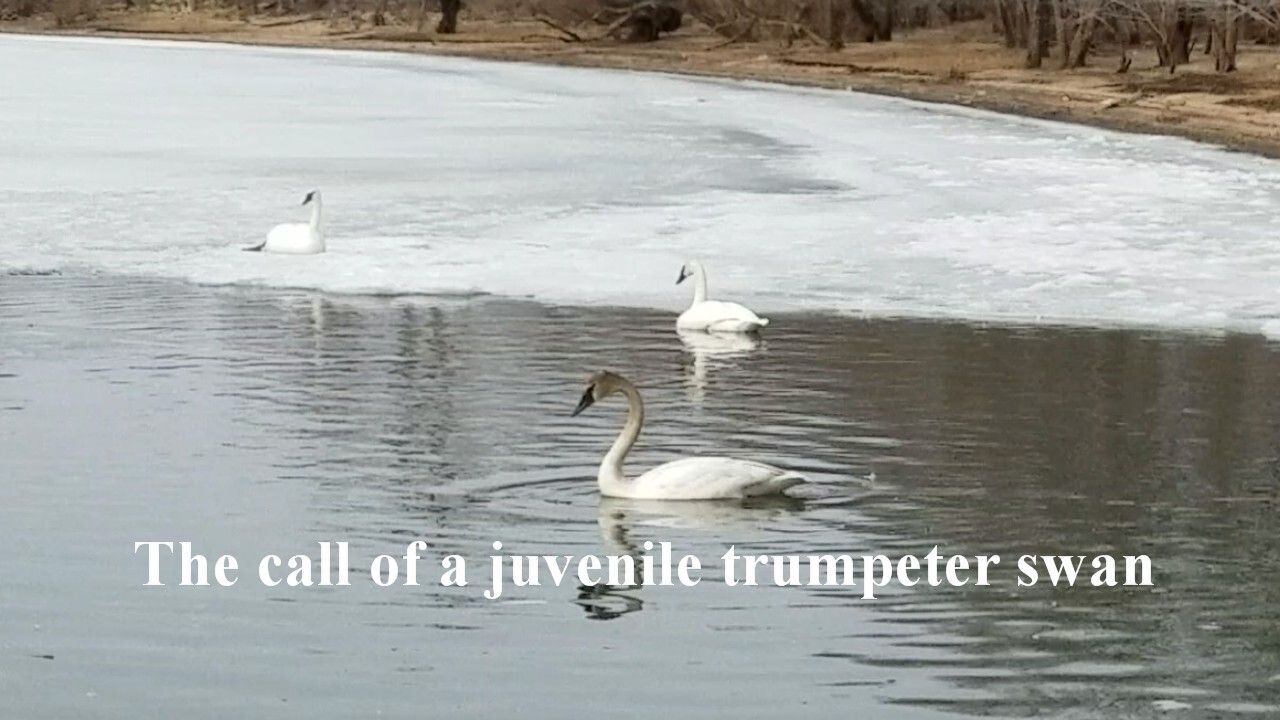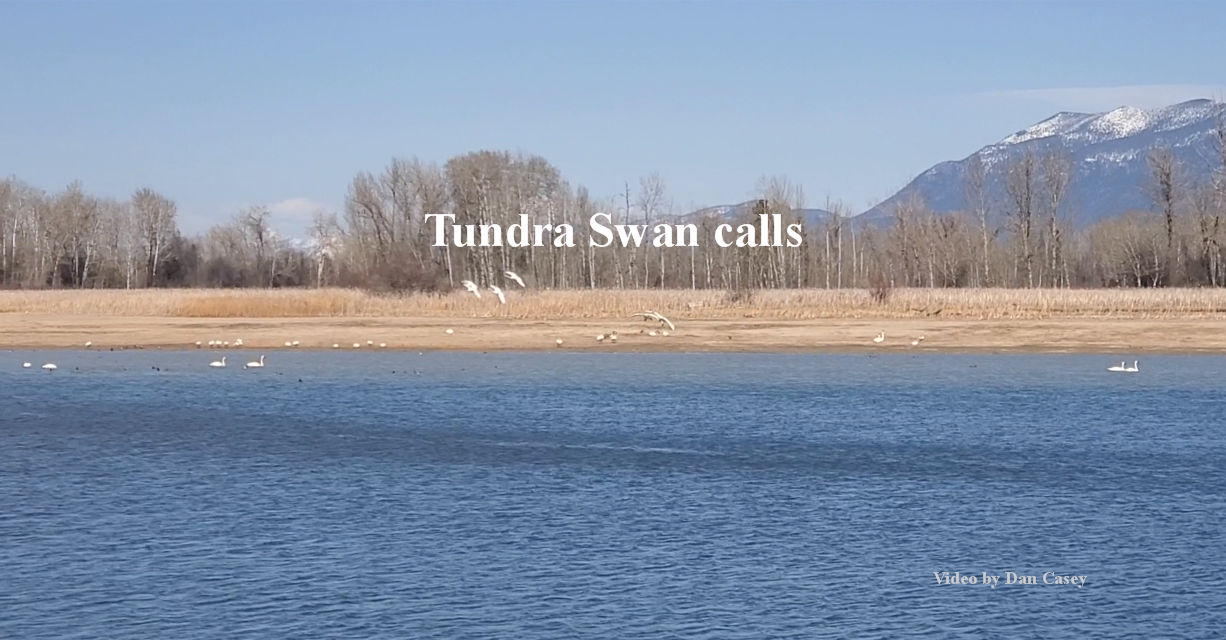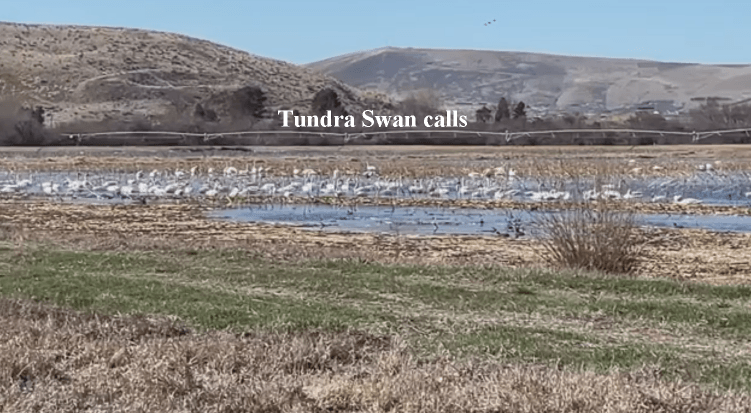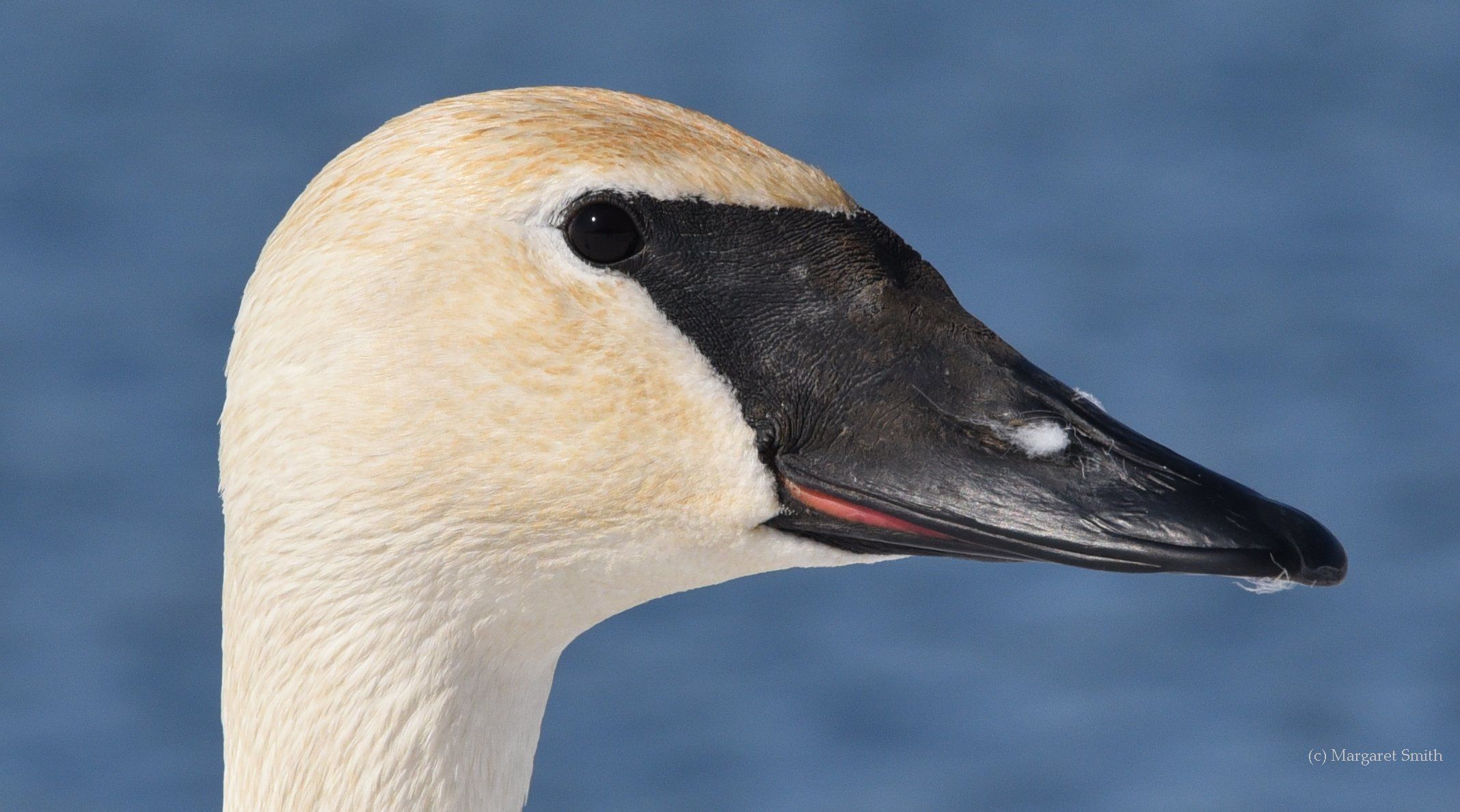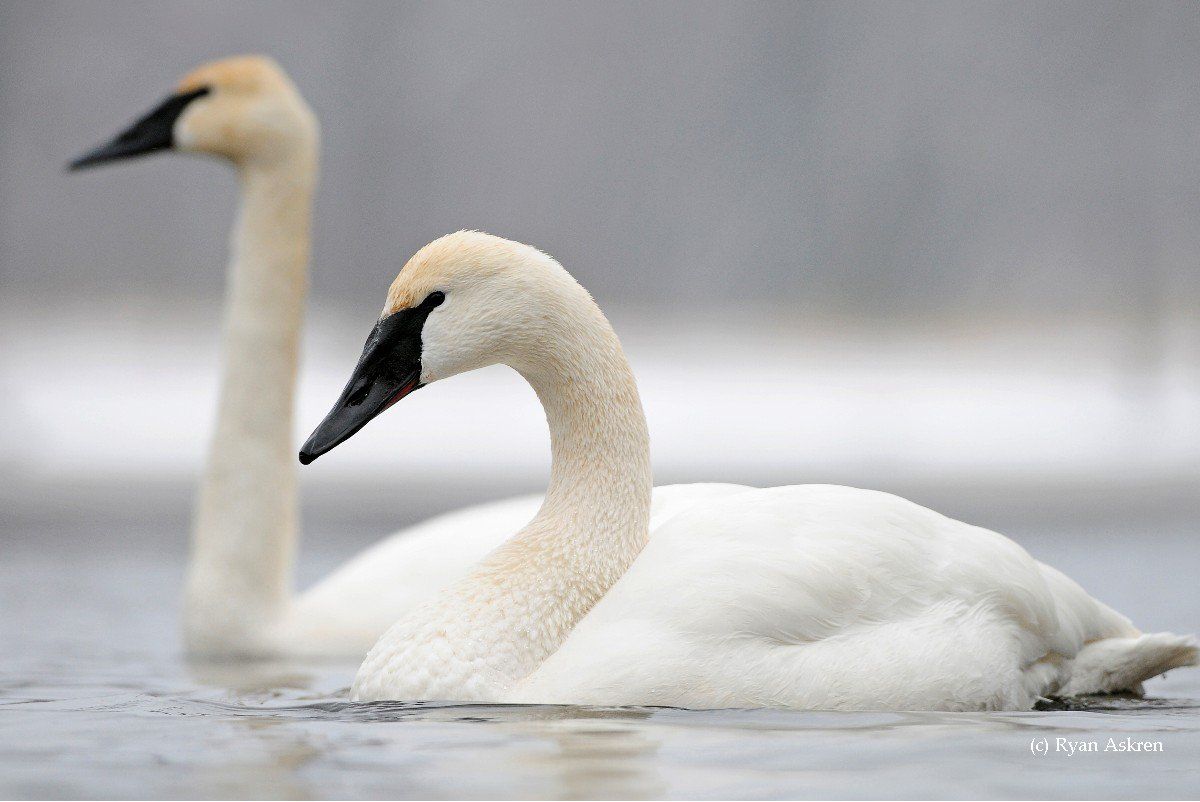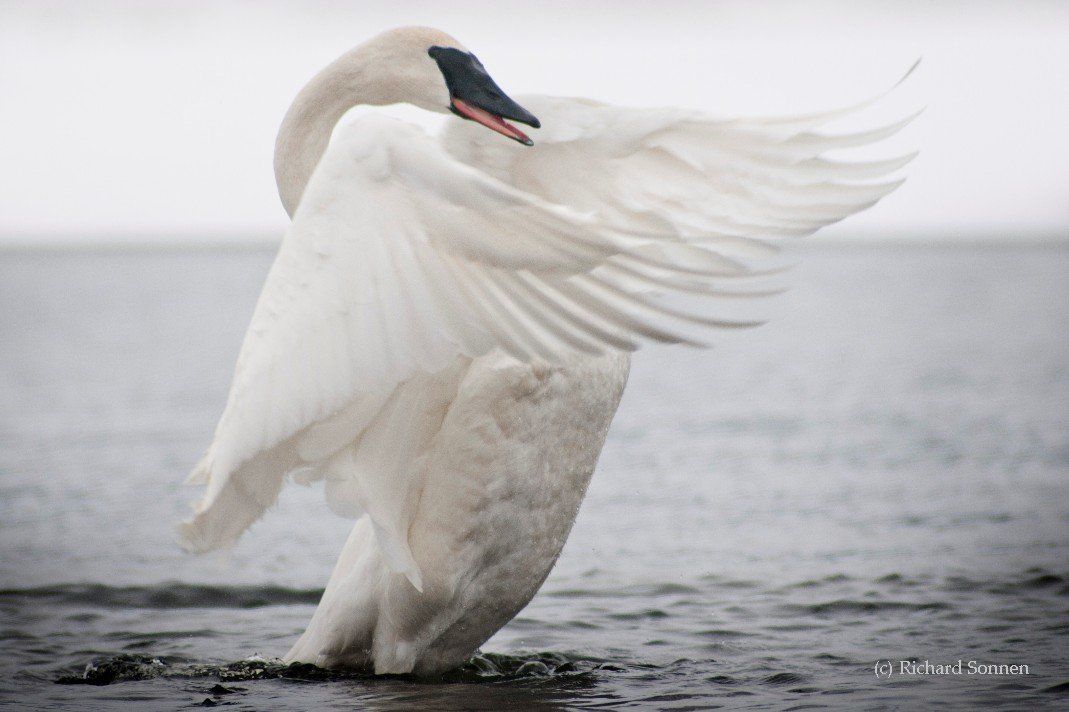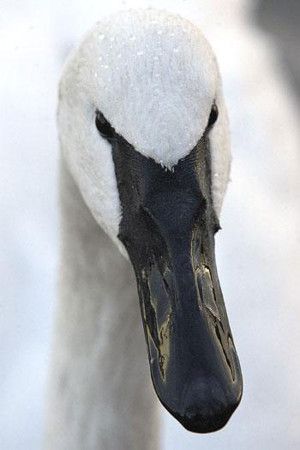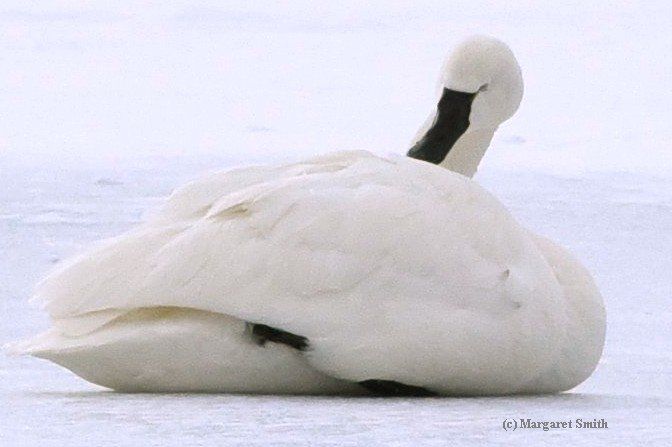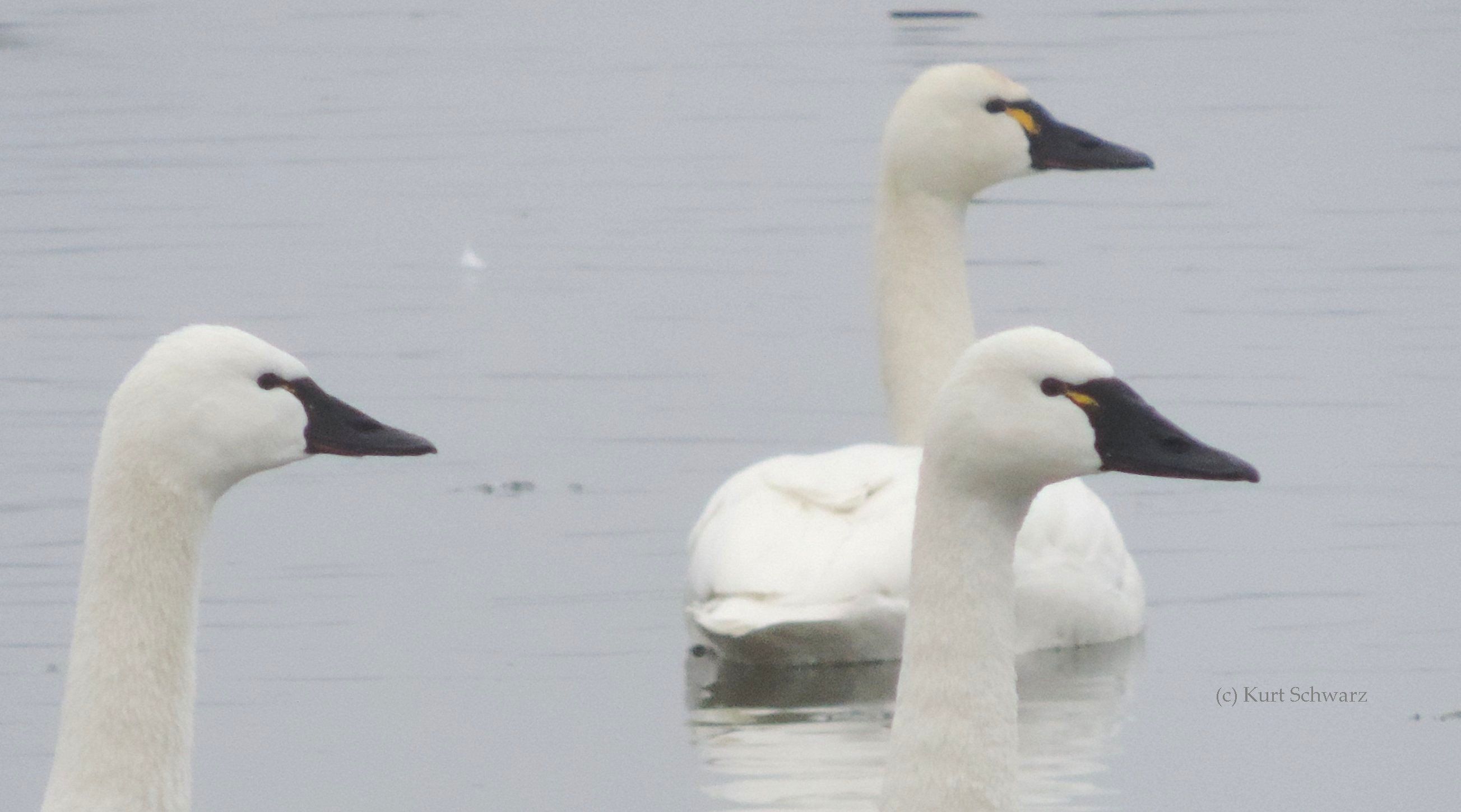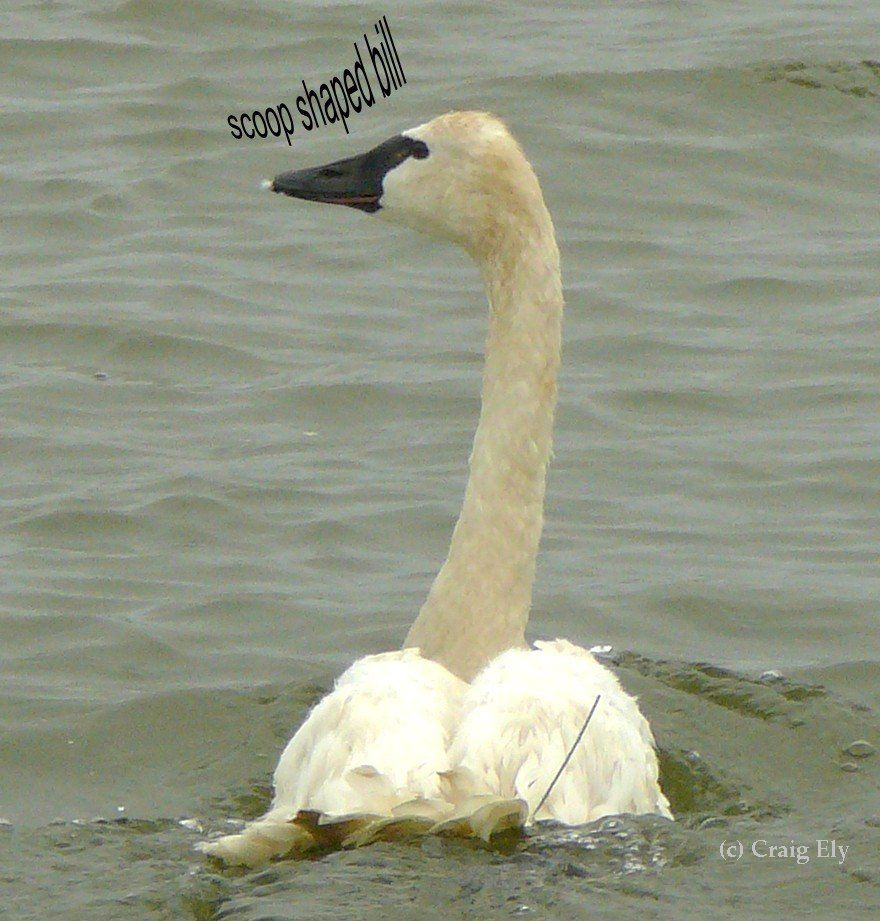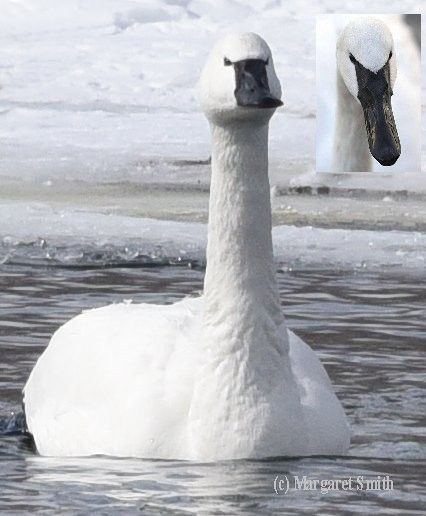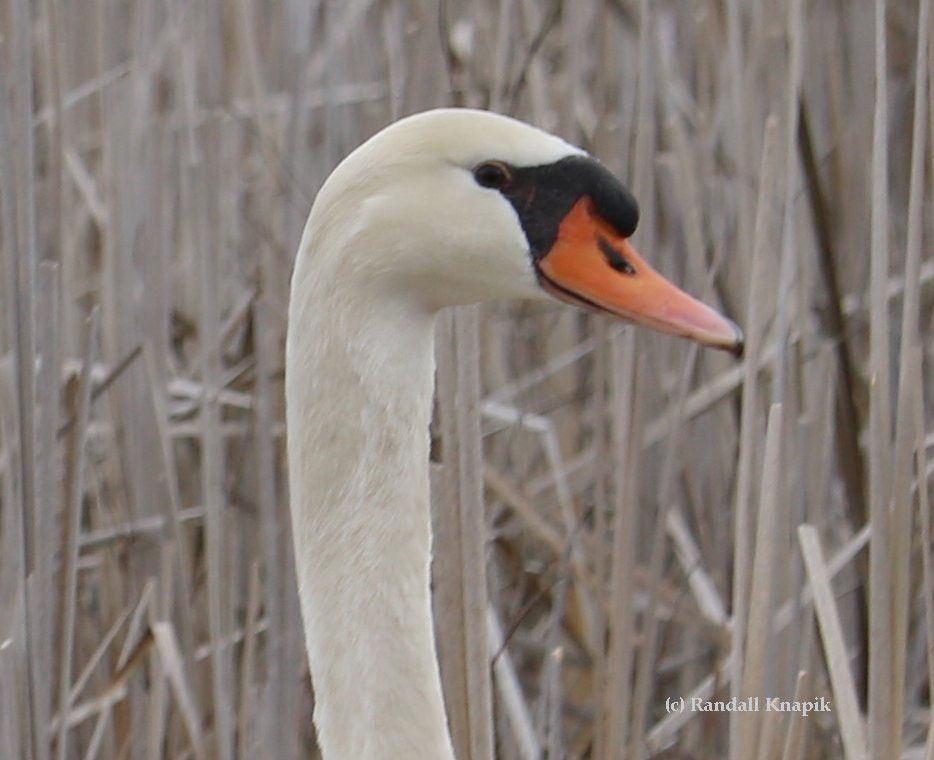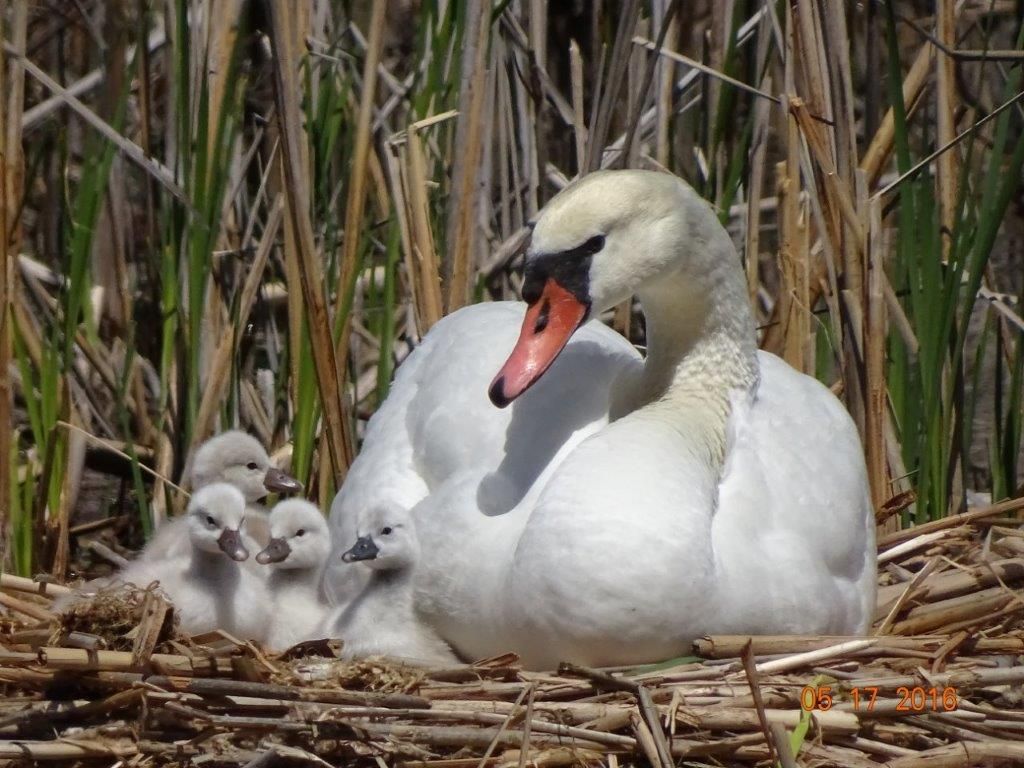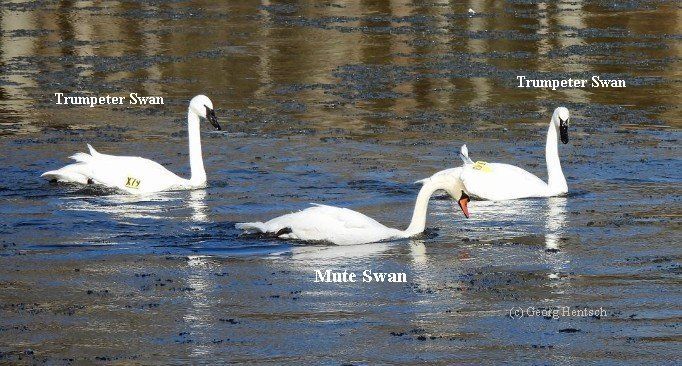Photograph by Kurt Schwarz. Tundra Swan (left) and Trumpeter Swan (right).
Voice, Head and Bill (White Swan)
Did you see a swan and wonder what kind it is?
Step 1
The easiest and best way to know which swan species you are seeing is to listen to the voice.
Voice
You can hear swan voices by clicking the links. Listen carefully, then compare the recording to the sound of the swan you are seeing in the wild.
Trumpeter Swan calls are unmistakably trumpet bugle calls. They have been known to be heard from 2 miles away in mountain regions.
Tundra Swans, sometimes known as Whistling Swans due to its call, have calls that are much higher pitched with a different cadence. When there is a mixed group of swans, listen for their calls and you will be able to pinpoint each species.
-
Resonant, sonorous, loud, low-pitched, bugle like call.
-
Dan Casey of the Trumpeter Swan Society explains how to identify a trumpeter swan (Birds and Blooms, June 2024)
-
Above: This video has the sights and sounds of Trumpeter Swans greeting a swan flying overhead; a swan dispute; a group response to the dispute; and other calls.
-
Watch the video and listen to the call of a juvenile trumpeter swan. Their call is higher pitched than the adult trumpeter swan.
-
High pitched often quavering oo-oo-oo, accentuated in the middle; or who, who-ho: woo-oo-woo; or who-who.
-
This video has the sights and sounds of Tundra Swans as they approach a landing. The video includes a description of how Tundra Swans greet each other in the water differently than Trumpeter Swans.
-
Generally silent but not "mute". Hissing sounds are common and occasional snorting noises.
Step 2
What if you don't hear a call?
Looking at the size of the swan and the bill color and bill shape is the next step in identifying the species of swan you are seeing.
Visual Differences: Size, head, and bill
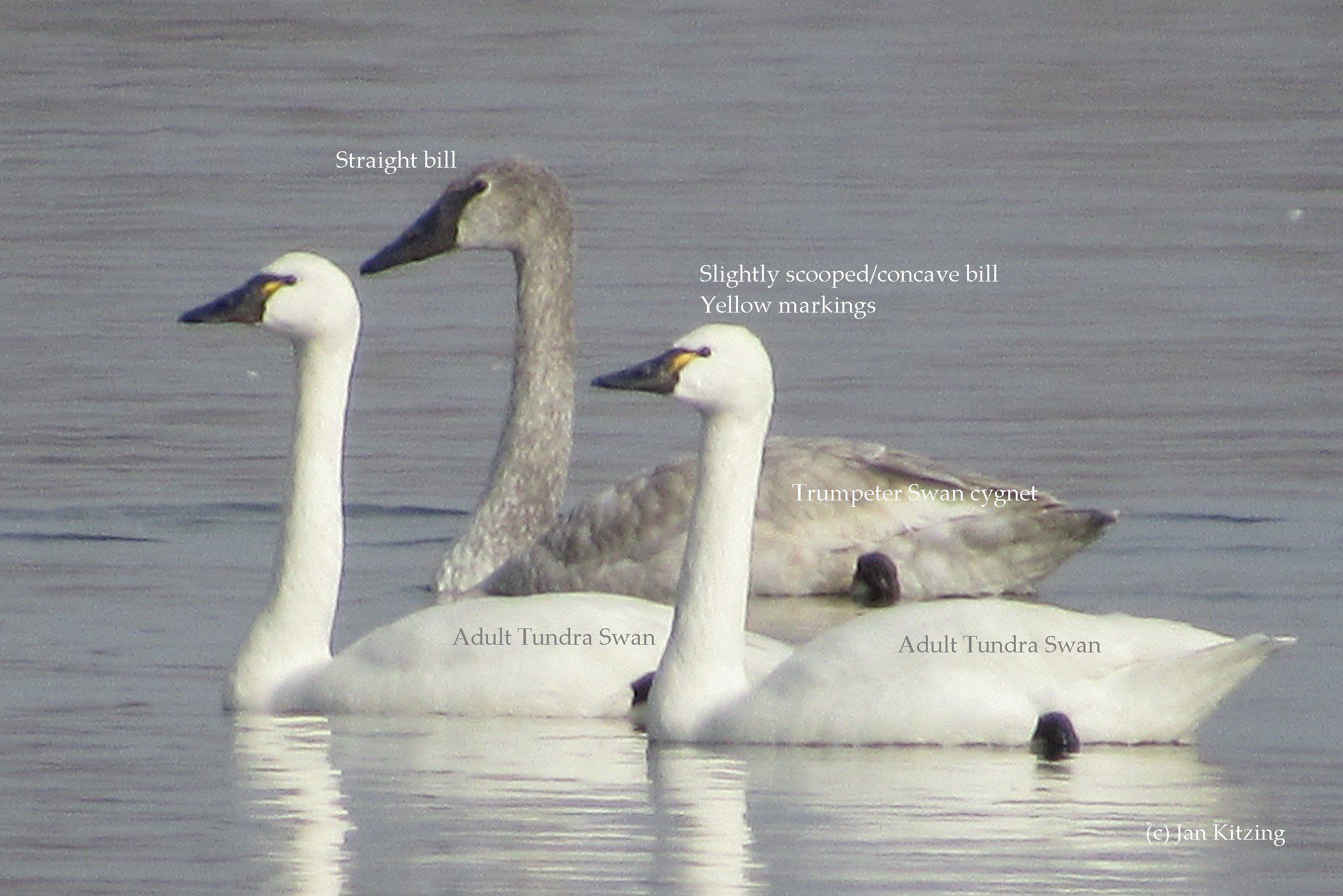
Photograph by Jan Kitzing
Here is a wonderful photograph by Jan Kitzing of Tundra Swan adults (white) in Missouri swimming next to a Trumpeter Swan cygnet(gray). Because the two species are swimming together, you can easily see the size difference between Trumpeter Swans and Tundra Swans, as well as the head and subtle bill difference.
The gray Trumpeter Swan cygnet is considerably larger than the white Tundra Swan adults. The Trumpeter Swan cygnet has a straight black bill, with the black markings extending to the eye.
The Tundra Swans usually have yellow markings on their bills. The Tundra Swan bill is slightly concave or spoon-shaped, but it can be difficult to tell the difference between the two species based on bill shape as the bill differences can be subtle to the untrained observer (and even the trained observer!). Often the Tundra Swan's eye looks somewhat separated from the bill. A Tundra Swan head shape is often more rounded than a Trumpeter Swan head shape.
Telling the two species apart is not as easy to see if swans are far away in flight or on the water. In that case, listen for the call.
Head and Bill: Trumpeter Swan
The Trumpeter Swan bill is heavy in proportion to its head with a straight profile. It has an angular head shape somewhat resembling canvasback duck. The eye is not distinct from bill.
Trumpeter Swans have black bills with red border on lower mandible; the red border may also be present on some Tundras.
Head and Bill: Tundra Swan
The Tundra Swan bill is more dish-shaped in profile. The bill is smaller in proportion to the head compared to the Trumpeter. The Tundra Swan head is smoothly rounded; the eye is usually distinct from bill.
Looking at a Tundra Swan head-on, the shape of the black bill between the eyes is generally more U-shaped or spoon-shaped (Trumpeter Swans generally have a more V-shape- see photo above).
The shape of the head profile may vary between individual birds. Tundra Swans especially have a wide range of head-bill shapes, some having very obvious concave bills, while others appear straighter. Look carefully at the eye area for any yellow on the lore and if the eye is distinct from the bill.
Tundra Swans have a black bill, usually with yellow spot of varying size in front of eye; this spot maybe absent on some Tundras.
To add to the confusion, sometimes Trumpeter Swans have yellow markings on their bill, and sometimes Tundra Swans have all black bills!
Head and Bill: Mute Swan
A Mute Swan's bill is orange with a black knob at the base near the eyes. A knob is clearly visible in both sexes but is more pronounced in adult males.
Still Unsure? Check out these Swan ID links
Did you see a gray swan? Gray swans are cygnets, less than a year old.
